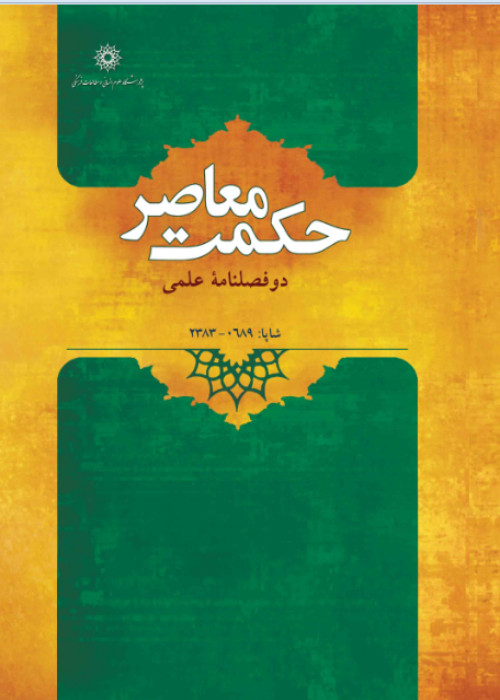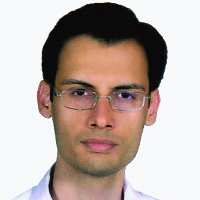A Critical Analysis of the Arguments for Specific Forms (al-Ṣuwar al-Nawʿiyya)
Muslim Peripatetic philosophers believe that physical objects are composites out of matter and form, holding that each natural kind involves a form other than the physical form, with which physical objects turn into various kinds, hence the label “specific [i.e. kind-related] form” (or form of species). Suhrawardī opposes Peripatetic philosopher on this matter, raising many objections against the view. Mullā Ṣadrā believes that Peripatetic philosophers are right, responding to Suhrawardī’s objections. In this article, we consider and criticize the arguments by Peripatetic philosophers, the objections by Suhrawardī, and Mullā Ṣadrā’s replies to the latter. We argue that although some of Suhrawardī’s objections do not work, attempts by Peripatetic philosophers and defenses by Mullā Ṣadrā do not suffice as proofs for the existence of specific forms.
In his book, Ḥikmat Ishrāq (2017), Yazdanpanah formulates Suhrawardī’s critiques of the Peripatetic arguments for the existence of specific forms, supporting Mullā Ṣadrā’s replies to Suhrawardī. The article “Recognition of the concept of nature in Suhrawardī’s philosophy in light of criticizing the specific form” addresses why Suhrawardī rejects the existence of specific forms and what implications it has, but it does not grapple with the arguments themselves (Dibaji and Nasekhian 2020). Qavam Safari in his “Theory of form in Aristotle’s philosophy” (2015) and Ahmadi in his “Substantial form” (2003) study the form and its features and applications for Aristotle. Kompani Zare makes a short reference to Suhrawardī’s critiques of the Peripatetic account of specific forms in his “A brief survey of Suhrawardī’s natural science” (2015).
Arguments for the Existence of Specific Forms:
First argument: physical objects have various effects. For instance, water has effects and features different from those of the air. The source of those effects cannot be the physical form shared by all physical objects. Moreover, it cannot be the hyle, which is pure potentiality and is thus the same in all physical objects. There should therefore be another source in physical objects, which is the cause of those effects, and that is the specific form.Second argument: In each kind of physical object, there is an entity over and above the hyle (or matter) and physical form, which is exclusive to and inseparable from that kind. That entity is either an accident or a substance. The first horn is false because this entity constitutes matter, which is a substance, while an accident cannot constitute substance. This constitutive component of matter is a specific form. For just as matter is not void of physicality, it cannot be imagined without being exclusively attached to a kind of physical object.Third argument: when a form changes, the physical object’s quiddity changes too. So, a form is not an accident in that a thing’s quiddity does not vary with the change of its accidents. The thing with the change of which the quiddity (our answer to the question of what it is in its substance) changes is a substance, rather than an accident. Otherwise, a substance would consist of accidents.Fourth argument: specific forms are parts of specific substances. The part of substance is a substance. For instance, the quiddity of fire is not exhausted by its physicality, but consists of a physical object and an entity with which the nature of fire comes to be.
Critique and Analysis of the Arguments:
An objection against all the arguments for specific forms is that they all are quiatic proofs (al-burhān al-innī), which are not characteristically certainty-conferring. This is because form the existence of an effect, one can know about the existence of its cause, but one cannot thereby know its nature. We cannot thus say with certainty that the cause of various effects issued from physical objects is their specific forms. The cause might be something else, whose nature is totally obscure to us.The objection against the first argument is that the horns are not logically restricted to those enumerated in the argument. So, the logical possibility remains that something else is the source of those effects, such as a certain combination between component particles of physical objects as discovered by modern sciences. Another objection is that the combination of physical objects out of matter and form, which is the basis of this argument, is an analytic combination, and thus, form and matter are analytic, rather than external, parts of physical objects. From the fact that, analytically speaking, physical objects have such parts, it does not follow that they have those parts in the external world as well.The middle term in the second argument is a difference we see in physical objects, rather than being constitutive of matter, which Mullā Ṣadrā adduces as evidence for his claim. This is because being constitutive of matter is a middle term for proving the substantiality of forms, rather than its very existence. Just like the first argument, it assumes the existence of matter and physical form to show that there should be a third entity in physical objects. On this account, all objections against the first argument also work against this argument. As for the third argument, it is true that when essential properties of a thing change, its quiddity (the way we answer the question “what is it?”) change too. However, the reverse of this claim, which is deployed in this argument, is not always true; that is, we cannot say that whenever the answer to the question of “what is it?” changes, the essential properties also change. For instance, when water turns into ice, the answer to its “what is it?” question changes, but this is not to say that its form changes too. The fourth argument does not provide us with an independent argument for the existence of specific forms. Indeed, it is based on the preceding arguments, which makes it vulnerable to Suhrawardī’s objection: the principle that the part of a substance is a substance is true only if we know that the thing in question is a substance in all respects.
It turns out that none of the arguments above suffice as proofs for the existence of specific forms because, on the one hand, all of these are quiatic proofs, which cannot apply to quiddities, and on the other hand, each argument is susceptible to separate objections.
- حق عضویت دریافتی صرف حمایت از نشریات عضو و نگهداری، تکمیل و توسعه مگیران میشود.
- پرداخت حق اشتراک و دانلود مقالات اجازه بازنشر آن در سایر رسانههای چاپی و دیجیتال را به کاربر نمیدهد.




